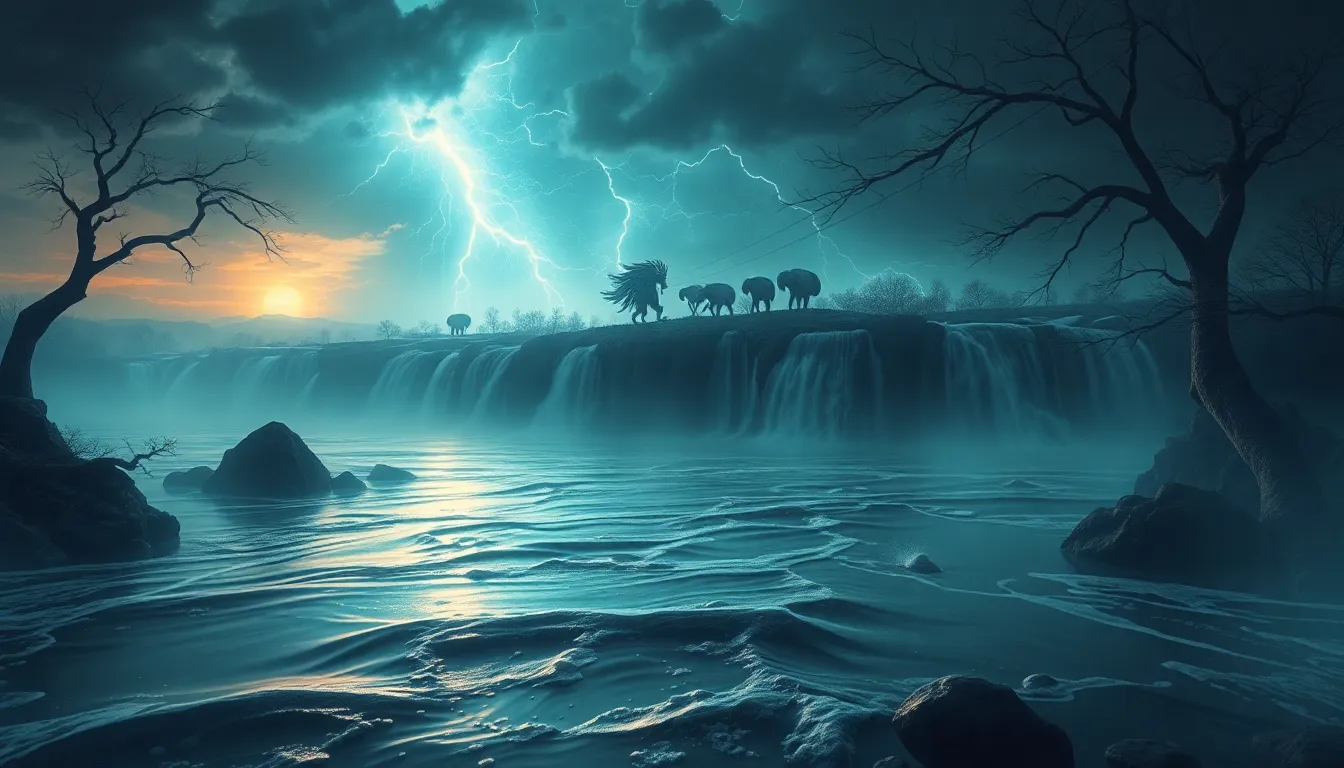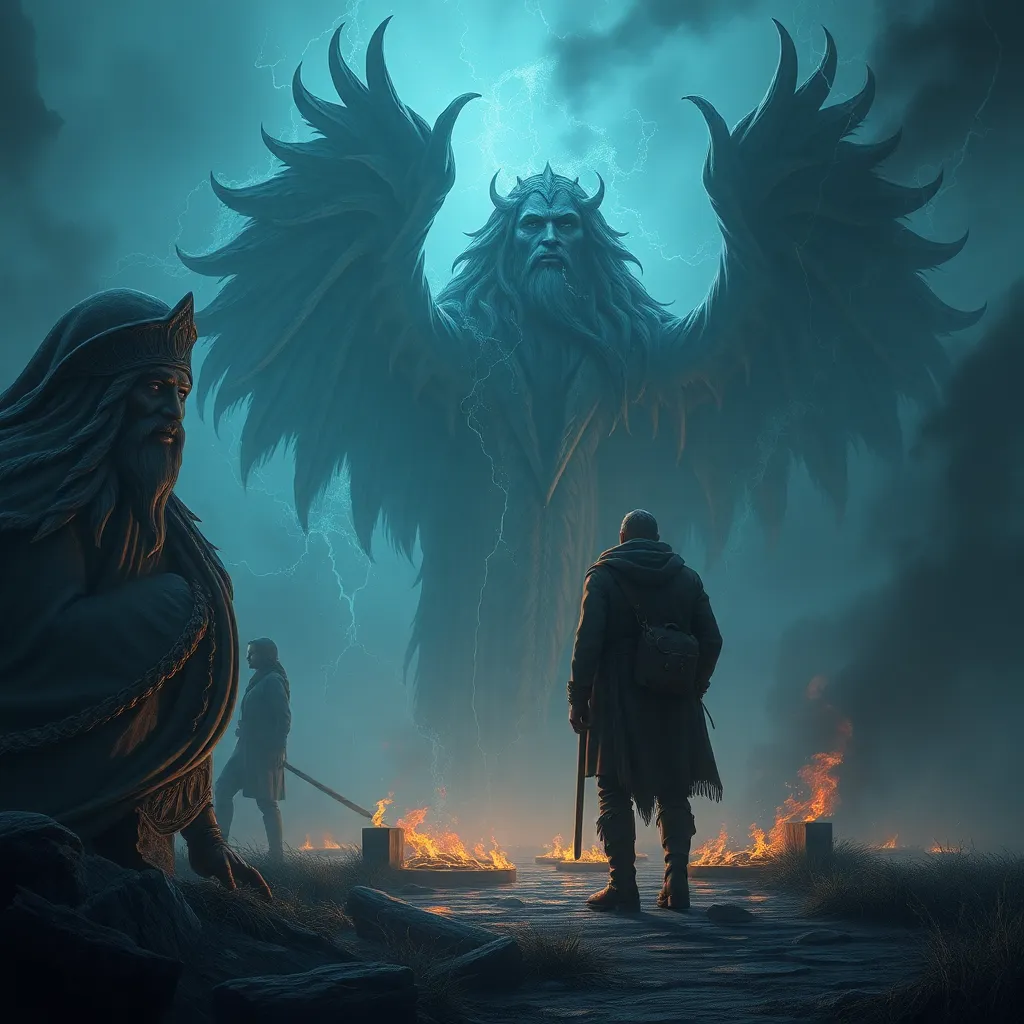The Role of Art in Representing Flood Myths: A Visual Journey
I. Introduction
Flood myths are narratives found across various cultures that recount stories of great deluges and the subsequent survival of humanity and life. These myths serve as metaphors for existential crises, renewal, and the relationship between humans and nature. The significance of art in narrating and preserving these myths cannot be overstated; it offers a powerful medium through which these timeless tales can be communicated and understood. This article will explore the historical context, artistic expressions, symbolism, geographical influences, modern interpretations, and the psychological impacts of flood myths, illustrating how art plays a pivotal role in their representation.
II. Historical Context of Flood Myths
The origin of flood myths can be traced back to ancient civilizations, where they served as foundational stories that explained the world around them. Cultures such as the Sumerians, Greeks, and Indigenous peoples of the Americas have their own versions of these myths, each reflecting their unique environments and beliefs.
Common themes in these narratives include:
- The wrath of deities or gods.
- Human defiance or moral failings leading to disaster.
- Survival and rebirth after destruction.
Flood myths hold great significance in cultural identity, providing a narrative framework that helps communities understand their place in the cosmos and the forces of nature.
III. Artistic Expressions of Flood Myths
Artistic expressions of flood myths are diverse and can be categorized into several forms:
A. Painting
In painting, various techniques and styles have been employed to represent flood myths. From the dramatic use of color and shadow in Baroque art to the more abstract interpretations of modern artists, paintings often capture the emotional weight of these stories.
B. Sculpture
Sculpture offers a three-dimensional perspective on flood narratives. Artists utilize materials such as stone, wood, and metal to create representations that bring the stories to life. These sculptures often depict key scenes or figures from the myths, emphasizing the physicality of the flood and its impact on humanity.
C. Literature and Poetry
Written art, including literature and poetry, plays a crucial role in conveying the nuances of flood stories. Through language, these forms can explore the depths of human emotion and the moral lessons inherent in these myths.
IV. Case Studies of Prominent Flood Myths
Several prominent flood myths illustrate the artistic interpretations that have emerged over time:
A. The Epic of Gilgamesh
This ancient Mesopotamian tale features a flood narrative that has been depicted in various artworks, showcasing the heroism of Utnapishtim as he builds an ark to survive the great deluge.
B. Noah’s Ark
In religious art, Noah’s Ark is a popular subject, often portrayed in illuminated manuscripts, paintings, and stained glass, emphasizing themes of salvation and divine mercy.
C. The Hindu Myth of Manu
In Indian art, the story of Manu, who saves life from a great flood with the help of a fish, is illustrated in sculptures and traditional paintings, highlighting the interplay between divine intervention and human action.
V. Symbolism in Artistic Representations
Artistic representations of flood myths are rich with symbolism:
A. Water as a Symbol of Destruction and Rebirth
Water often symbolizes both destruction and renewal, reflecting the dual nature of floods as catastrophic yet also purifying and life-sustaining.
B. Animals and Their Roles
Animals in flood myths, such as the dove in Noah’s Ark, represent hope and survival, serving as messengers of peace and new beginnings.
C. The Human Figure
The depiction of human figures in flood art often conveys a range of emotions, including fear, desperation, hope, and resilience, highlighting the human experience in the face of disaster.
VI. The Influence of Geography on Artistic Depictions
Geography plays a significant role in shaping the artistic interpretations of flood myths:
A. How Different Landscapes Shape Artistic Interpretations
Regions prone to flooding may depict their myths with a focus on local flora and fauna, while arid regions may emphasize the struggle against water scarcity.
B. Regional Variations in Artistic Style and Symbolism
Artistic styles vary based on cultural context, with some cultures favoring realism while others lean towards abstraction or stylization, reflecting their unique perspectives on nature and myth.
C. The Role of Climate and Environmental Factors
Climate influences the creation of flood myths; for instance, communities in flood-prone areas develop rich narratives around these events, as they directly experience the impact of such natural disasters.
VII. Modern Interpretations of Flood Myths in Art
Contemporary artists are reimagining ancient flood stories, often integrating modern themes and concerns:
A. Contemporary Artists Reimagining Ancient Flood Stories
Artists today use flood myths to comment on current societal issues, such as climate change and environmental degradation.
B. The Impact of Climate Change
Modern narratives often reflect fears associated with rising sea levels and extreme weather, drawing parallels with ancient myths.
C. The Use of Multimedia and Technology
Technology has enabled new forms of artistic expression, including digital art and interactive installations that engage audiences in unique ways.
VIII. Art as a Tool for Cultural Preservation
Art plays a vital role in keeping flood myths alive in modern societies:
A. How Art Helps Keep Flood Myths Alive
By continuously reinterpreting these myths, artists ensure that they remain relevant and resonate with contemporary audiences.
B. The Role of Museums and Galleries
Museums and galleries serve as custodians of cultural heritage, showcasing artworks that depict flood myths and facilitating public engagement with these narratives.
C. Educational Programs
Many educational initiatives aim to promote understanding of flood myths through art, fostering appreciation for cultural narratives among younger generations.
IX. The Psychological and Societal Impact of Flood Myths in Art
Art reflecting flood myths can have profound psychological and societal effects:
A. Art as a Reflection of Societal Fears and Hopes
Art serves as a mirror to societal anxieties regarding natural disasters, allowing communities to process collective fears and hopes.
B. The Therapeutic Role of Art
Engaging with flood-related art can provide therapeutic benefits, helping individuals and communities process trauma associated with real-life floods.
C. Community Engagement and Storytelling
Visual art fosters community engagement by inviting storytelling, where shared experiences are expressed and preserved.
X. Conclusion
In summary, the significance of art in representing flood myths is multifaceted, encompassing historical, cultural, and psychological dimensions. Art not only preserves these vital narratives but also reinterprets them for contemporary audiences, allowing for a deeper understanding of humanity’s relationship with nature. As we navigate the challenges of modernity, the stories of floods and survival remain ever relevant, reminding us of our shared history and the resilience of life.



